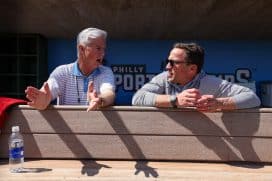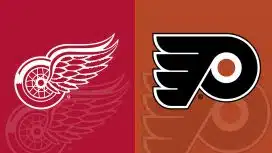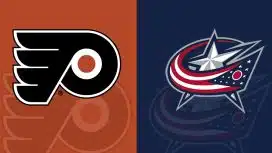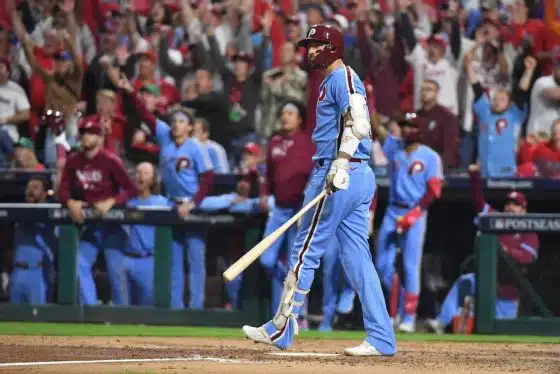Phillies
What Could Have Been – Reviewing Phillies Recent Moves
By Paul Bowman, Sports Talk Philly Editor
Nearly 50 games into the 2021 season, things were not going as fans had hoped for the Phillies and comparisons were flying.
Following a Monday-night blowout at the hands of the Miami Marlins once again, the Phils were two games under .500.
The road has had some ups and downs, but the Phillies managed to just hit .500 by winning 7 of 10 against two of the best teams in the sport (and the Cubs) while beating up on some former Phillies disappointments.
That surge and the bit of a fall back to earth of some former Phillies has lead to a decrease in the comparisons being made, but halfway through the season, it seems like a realistic time to take a look at the moves the Phillies made this offseason and the players who the team had that would have filled those roster spots otherwise.
Note: Since it would require going back to 2019 or earlier to find players like JP Crawford and Nick Williams as positional matches, additions like Matt Joyce and Didi Gregorious are not addressed here.
Starting Pitchers
| Player | IP | ERA | FIP | WHIP | W-L | K-BB |
|---|---|---|---|---|---|---|
| Matt Moore | 31.2 | 5.40 | 6.23 | 1.64 | 0-1 | 24-18 |
| Nick Pivetta | 96.1 | 4.30 | 4.17 | 1.28 | 7-4 | 113-44 |
As a person who was never a fan of Pivetta, the Phillies really messed up trading him in 2019 for a guy that doesn’t even belong in the majors. The key factors in this comparison are money, health and innings; while Pivetta has thrown three times more innings than Moore, Moore maked five times Pivetta’s salary and the former Phillies prospect is just going to be entering his first year of arbitration.
We already knew the Pivetta trade was a horrid mistake for Klentak, but his replacement in the rotation has actually faired worse than Pivetta so far in terms of ERA, FIP and WHIP. To be fair, Moore has been decent since his move to the bullpen and recent reinstatement in the rotation (3.05 ERA, 1.26 WHIP) but how long that’ll last is a question mark and his innings are still far less than Pivetta has provided his new club.
| Player | IP | ERA | FIP | WHIP | W-L | K-BB |
|---|---|---|---|---|---|---|
| Chase Anderson | 38 | 7.34 | 5.61 | 1.61 | 2-4 | 29-18 |
| Cole Irvin | 106 | 3.65 | 3.68 | 1.18 | 6-8 | 78-19 |
This one just plain hurts. Not only has Anderson been hurt for months, but he’s been terrible when he was available. The Phillies traded Irvin for a minimal amount of cash and then handed Anderson $4 million dollars while Irvin has been a starter for the entire first half putting up performances that put him essentially on par with Zach Eflin. The Phillies ought to be kicking themselves on this one as not only would the team have a better record, bit they’d have money to invest in players that don’t contribute best by not being on the roster. Plus the team would only need one of Moore, Velasquez or Howard (perhaps even Suarez or Falter) to be just an average option to have a fill rotation.
This one is perhaps the one that hurts most of all.
Relief Pitchers
| Player | IP | ERA | FIP | WHIP | W-L | K-BB |
|---|---|---|---|---|---|---|
| Brandon Kintzler | 23.2 | 7.61 | 5.70 | 1.73 | 2-1 | 18-7 |
| Tony Watson | 29.1 | 4.60 | 4.36 | 1.16 | 3-3 | 20-13 |
These two are together because the Phillies had both on minor-league deals that could pay real money, but the Phillies opted only to keep Kintzler on his $3 million deal.
Watson has been the better player and provides a relatively effective left-handed option, something the Phillies have only seemed to stumble upon in the last week with internal options.
As for Kintzler’s part, he’s almost been a relief pitching mirror of Chase Anderson; his most effective stretch for the team was probably when he wasn’t available to pitch for the team. He’s given up more earned runs than any other reliever on the team. He has the highest WHIP on the team (min 10 IP). In fact, there has been only one player to post a worse ERA in a Phillies uniform than him this season and that was Neftali Feliz, who gave up four runs in only one inning pitched.
The only think Kintzler seems to have over Watson so far are his strikeouts, that may provide some semblance of hope for a turnaround, but this again appears to be a decision that cost the team more money to keep the worse player around. Of course, he did mention it was the COVID vaccine that may have injured him and contributed to some of his poor performances, so…
| Player | IP | ERA | FIP | WHIP | W-L | K-BB |
|---|---|---|---|---|---|---|
| José Alvarado | 33.2 | 4.54 | 4.92 | 1.66 | 5-0 | 46-31 |
| Garrett Cleavenger | 16 | 2.25 | 5.10 | 1.56 | 2-3 | 19-9 |
Although it was a three-team trade, the Phillies essentially traded away Cleavenger for Alvarado. Early in the season, it looked like it could be a steal for the Phillies. Alvarado was dominant, though erratic early in the season. Even though he got into trouble, he managed a sub-2 ERA in the first month of the season and, through June 25, had posted an ERA of just 2.57.
His control issues were very apparent to all who actually watched the games, however, and that has really bitten him over the past few weeks. Over his last six appearances, he has posted a 14.29 ERA while allowing opposing batters to hit .407 and giving up four walks. The Phillies certainly hope this is a brief blip that he can get past.
As for Cleavenger, he’s only pitched half the innings Alvarado has (he had an injury that sidelined him for a bit) and his FIP indicates he’s been extremely lucky – something that is certainly less likely to happen if he’d been playing with the Phillies defense behind him. He has also been pitching in typically less stressful situations.
Since both players could have drastically different looks to their respective seasons after game 162, this will be one of the more interesting comparisons to keep tabs on. Alvarado has the clear advantage with stuff, but Cleavenger is more likely to be a pitcher while some might say Alvarado is just a thrower.
| Player | IP | ERA | FIP | WHIP | W-L | K-BB |
|---|---|---|---|---|---|---|
| Sam Coonrod | 28 | 4.18 | 4.52 | 1.29 | 1-2 | 30-11 |
| Victor Arano* | 16.2 | 4.32 | 4.14 | 1.56 | 0-1 | 19-9 |
Sam Coonrod was seemingly a universally poor pickup among fans, including myself, when the Phillies moved the then recently drafted Carson Ragsdale for the reliever.
Coonrod has been better than most would have expected. He’s had his command issues and is currently on the IL, but remove that last appearance (where he supposedly got injured) and he’s posted a 3.29 ERA and a 1.24 WHIP. That is more than acceptable considering what so many of the other pitchers out in the pen have done.
The Phillies designated Arano for assignment nine days after acquiring Coonrod and the reason there’s an asterisk next to his name is he has only pitched in the minors this season. He has not impressed in Gwinnett and has been unable to crack the Braves 40-man despite the team having four pitcher land on the 60-day IL.
Once a promising piece of the Phillies future, Arano has not gotten back to what he had shown pre-injury and this comparison would seem to be the first that is a clear and decisive victory for the Phils.
| Player | IP | ERA | FIP | WHIP | W-L | K-BB |
|---|---|---|---|---|---|---|
| Archie Bradley | 22 | 3.68 | 5.80 | 1.55 | 3-1 | 13-15 |
| Blake Parker | 13.1 | 2.70 | 3.62 | 1.35 | 1-0 | 11-4 |
Bradley was one of the first signings by the Phillies this offseason when the team handed him $6 million.
He has not performed as the team had hoped overall, but he has brought some veteran leadership and, as he has removed himself from an injury, his velocity has gone back up and his performance has improved. He’s actually posted a 2.65 ERA since May 23 and, in his last six starts, has pitched in high-leverage situations where he earned a save and three holds.
Parker spent a month in the minors before being called up and has been just as effective as he was for the last two seasons with the Phillies. His sample size is fairly low, but he has been a great help to the Cleveland bullpen for just $1.6 million on the year.
Taking an overall viewpoint, Parker has the better stats and the lower pay but Bradley has the higher-leverage situations and has been improving recently, so investing in Bradley may have been the smart move for Philadelphia here – if Archie can keep that velocity up in the second half of the season.
| Player | IP | ERA | FIP | WHIP | W-L | K-BB |
|---|---|---|---|---|---|---|
| David Hale | 26.2 | 6.41 | 5.15 | 1.46 | 0-2 | 21-10 |
| Jose Alvarez | 31.1 | 3.45 | 3.61 | 1.21 | 2-1 | 21-10 |
When you see David Hale’s name, you know it’s a loss and that’s no different here.
Hale only made the roster because big-brained Joe Girardi went to bat for him. Whether it was their time together while with the Yankees or how easily Girardi could smack dingers off the left-hander, there was literally no payoff to this move (other than the Phillies paying off Hale to leave the organization).
It’s unclear why Hale even received the $850,000 offer and nearly every fan and analyst questioned it at the time. Even the Phillies team knew it was a poor idea to send him out there, often only using him when a game was out of hand or no one else was available. His stats were bad and the team went 3-14 in games where he took the mound.
The Phillies finally cut him loose on June 27th, when he elected free agency.
Alvarez, another lefty, is making a bit more ($1.05 million) with the Giants, but has also been a competent major league pitcher who is brought into meaningful games and situations.
Alvarez spent the previous two seasons with the Phillies and was there best reliever in 2020 before his season ended on a comebacker that resulted in a testicular contusion (and an out).
There’s really no question here. One of these guys is a major league pitcher and one of them is a guy who remains unsigned by any MLB organization.
Catcher
| Player | PA | BA | SLG | HR | RBI | Runs | K-BB |
|---|---|---|---|---|---|---|---|
| JT Realmuto | 276 | .268 | .438 | 8 | 34 | 33 | 64-33 |
| Deivy Grullón* | 115 | .194 | .456 | 8 | 20 | 17 | 42-12 |
This is a quick one as Grullón has been with multiple organizations this year and has yet to get into the majors. He has not been great, but provides power and calls a good game.
Realmuto is the best catcher in baseball, though he has had his struggles this year. He just got the NL on the board in the All-Star game with a home run there. There wasn’t any issue with the team ever getting the player wrong here, but whether he is worth the five-year, $115.5 million deal he received is the long term question to be asked.
Utility
| Player | PA | BA | SLG | HR | RBI | Runs | K-BB |
|---|---|---|---|---|---|---|---|
| Brad Miller | 177 | .250 | .462 | 9 | 25 | 27 | 60-21 |
| Phil Gosselin | 131 | .308 | .433 | 3 | 19 | 10 | 35-9 |
This is a bit of a messy comparison. Gosselin offers the better defense and on-base options, but Miller offers true pop off the bench.
Miller has been improving over the last month or so and had that immense three-homer game. He’s batting over .300 in his last five games and has recently been showing his value.
Gosselin spent some time in the minors, but has been the same dependable hitter and fielder that he had been for the Phillies last season. His defense could have been the most appealing part to the Phillies, particularly with his ability to play every infield position – the spot in which defense has butchered so many Phils games this season.
The money is also a big part here as Miller is making $3.5 million compared to Gosselin’s $570,500. The question becomes: is the price difference worth the more or less than the value provided on the field between the two?
Overall, the front offices (there were two separate ones this offseason) may not have done as poorly as fans thought when the Phillies took yet another of their downturns in May. Not every decision was the wrong one and the team made a few clearly beneficial moves for the club. There are also a few moves that remain up in the air and could be decided later this season.
Of course, there are glaring mistakes, particularly among pitchers like the starters the team through money at and some of the veteran pitchers they choose to bring in over other arms and those moves are going to continue to sting Phillies fans, even if Nick Pivetta is willing to give the team a win when they meet up.
GM Dave Dombrowski is now tasked with evaluating these very same decisions and deciding whether his club made enough of the right moves that the misses could be corrected. The Phillies plan to attend Cole Hamles’ showcase, so one of his upcoming decisions will be whether or not signing Cole Hamels can cover one of the team’s poor choices this offseason and help make the Phillies true contenders in the second half.
One thing is certain: whatever conclusions Dombrowski comes to from comparisons like these will help him to shape the future of the Phillies franchise through trades, signings and even potential front-office moves.












































